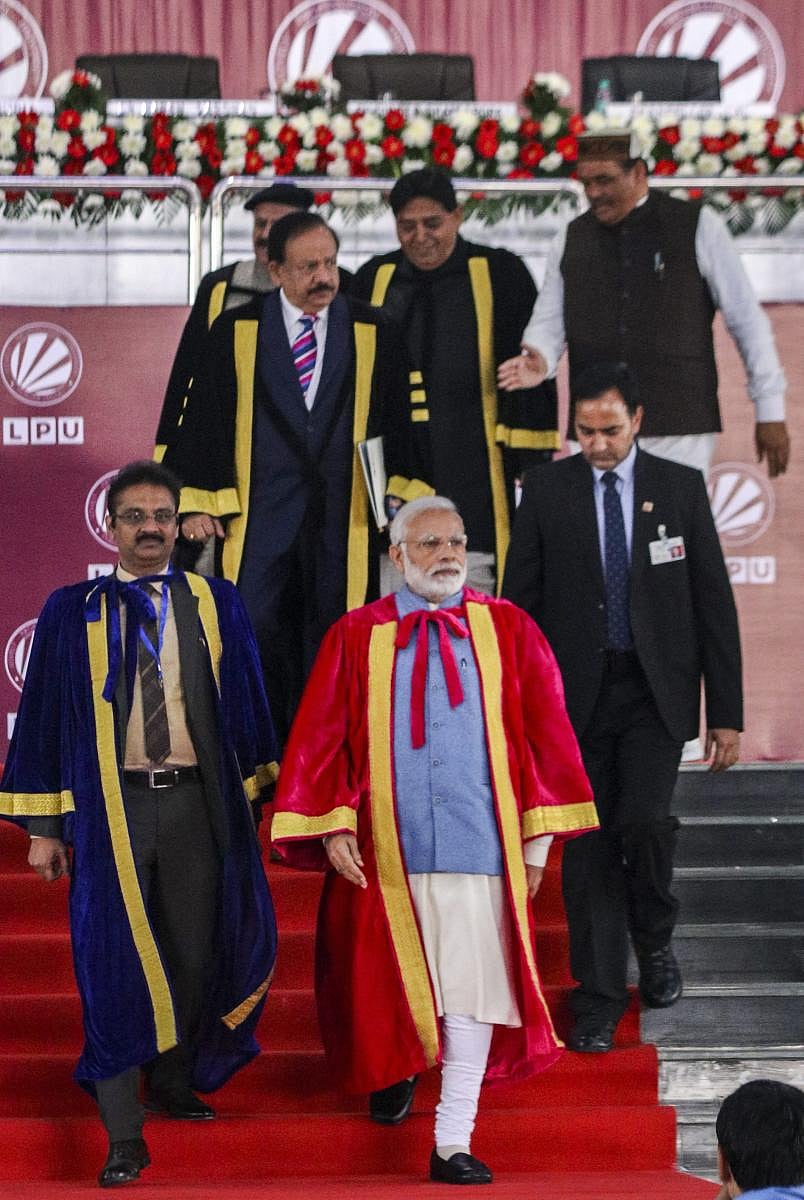
Jawaharlal Nehru, in a speech in 1960, spelt out clearly how he understood the implications of science for India: “It is science alone that can solve the problems of hunger and poverty, of insanitation and illiteracy, of superstition and deadening custom and tradition, of vast resources running to waste, of a rich country inhabited by starving people...Who indeed could afford to ignore science today?…The future belongs to science and to those who make friends with science.”
Narendra Modi loves to debunk India’s Nehruvian legacy which, according to him, caused the country great distress. Be that as it may –- and while there might be a great debate about whether our fourteenth prime minister has been a blessing or an unmitigated disaster for India during his first tenure, or a mix of both -- when one thinks about the intangibles of the legacies of the two men, one cannot but notice a stark difference between Nehru and Modi in their approach to science, and the damage inflicted on the cause of science by the latter.
Call it saffronisation or a vain attempt at reviving an imagined past -- it makes us a laughing stock when a person as high as our prime minister proclaims, as he did in late 2014, at the opening ceremony of a hospital in Mumbai that modern medical achievements — plastic surgery, cloning and in-vitro fertilisation — were all practised in India’s ancient past; that Lord Ganesha’s elephant-head is proof that advanced transplant surgery existed, and that the ways Kunti conceived in the Mahabharata were evidence of the practice of in-vitro fertilisation.
We heard a lot of bunkum during the Indian Science Congress held in early 2015 where an invited lecture sought to project Lord Shiva as “the greatest environmentalist in the world.”
At one symposium on Ancient Sciences through Sanskrit, people listened with wonder to highfalutin tales told with ‘evidence’: of sophisticated flying vehicles prevalent in Vedic times — hold your breath — which were as large as modern-day jumbo jets, with radar and advanced guidance and tracking systems, while their ‘pilots’ wore magic suits, capable of interplanetary travel, to boot. What could be the source, pray?
The authors claimed that their work was ‘based’ on the Maharishi Bhardwaj Vaimanika Sastra, a text putatively written around 400 BC, a ‘fact’ contradicted by scholars. That might explain the outrage of V Ramakrishnan, a Chemistry Nobel laureate of 2009, who said the Indian Science Congress had become a ‘circus’ and vowed never to attend one again.
This has been a pattern. In the recent edition of ISC in Jalandhar, we saw people like G Nageshwar Rao, the Vice Chancellor of Andhra University, citing the story of the Kauravas, the 100 legendary sons of Dhritarashtra and his wife Gandhari as ‘evidence’ that stem cell research was practised in India thousands of years ago.
If mixing science and mythology was not too bad already, K J Krishnan, another university lecturer from Tamil Nadu proceeded to dismiss the findings of Albert Einstein and Isaac Newton and argued that Newton had failed to “understand gravitational repulsive forces” and said gravitational waves should be renamed “Narendra Modi Waves”!
Just in case one thought the Hindu nationalists are Luddites, they are not. They love science, in fact, they are obsessed with it. The rider is that they display a desperate urge to “prove” that modern science verifies the metaphysical assumptions of Vedic Hinduism and so the Vedas and the Upanishads are simply “science by another name”.
Colonial hangover
Howevermuch we are miffed over Hindu nationalists celebrating the most mystical and obscurantist elements of Hinduism as “Vedic science”, the problem underpins a colonial hangover where the leading voices in science studies argue that modern science reflects dominant social interests and cultural values of Western society, in response to which non-Western societies are urged to develop their own “alternative sciences” as a step toward “mental decolonisation.”
This, in part, might explain why there is so much proliferation of bogus science papers doing the rounds at the India Science Congress conclaves during Modi’s time. Instead of myths, a relook into the colonial encounter between India and Britain might prise open an important and fascinating but relatively unexplored chapter in the historical constitution of Western science and technology where India constitutes an interesting part because, like many other cultures, it has a distinct legacy of indigenous science and technology.
Before the 14th century, Europe was almost wholly receiving from Asia than giving, especially in the field of technology. By the mid-19th century, colonial India constituted the site for one of the largest, state-sponsored scientific and technological enterprises undertaken anywhere in modern times.
Nehru left India with the world’s second-largest pool of trained scientists and engineers. Men like Homi Bhabha and Vikram Sarabhai built the platform under Nehru’s tutelage for Indian accomplishments in the fields of atomic energy and space research. Their successors have given the country an excellent scientific establishment in the developing world. It is a sad commentary that many of the finest minds in Silicon Valley, who might be admirers of Modi, are the products of an infrastructure for excellence in science and technology, which Nehru created.
Modi, in his attempt to negate Nehru who was noted for his vision to inspire a scientific temper, has chosen instead to mainstream pseudo-scientific orthodoxies. Modi, no matter whether he survives the Lok Sabha elections this year or not, will go down as one who caused irreparable damage to the cause of science in the country.